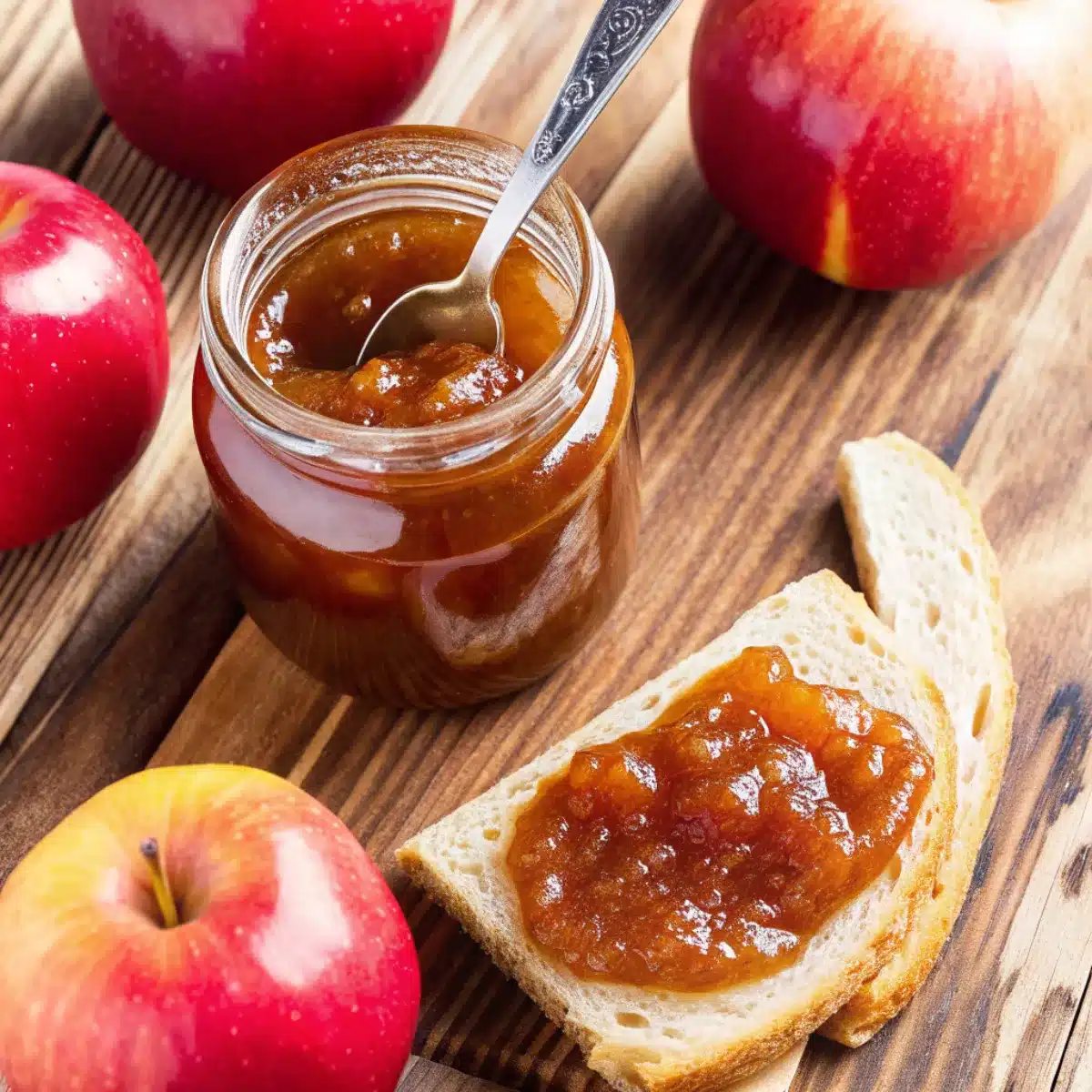There’s something magical about a jar of homemade Apple Butter. Smooth, spiced, and deeply flavorful, this thick apple spread is made by slow-cooking apples until they caramelize and take on a rich, almost buttery texture. Despite its name, apple butter contains no actual butter—it gets its name from its silky consistency.
It’s one of the most versatile fall recipes you can make. Spread it on toast, biscuits, or pancakes, swirl it into oatmeal or yogurt, or even use it in baking for cakes and muffins. Best of all, apple butter is simple to make and keeps well, making it a wonderful homemade gift during the holiday season.
Ingredients
- 6 lbs apples (Granny Smith, Honeycrisp, or a mix), peeled, cored, and chopped
- 1 1/2 cups granulated sugar
- 1 cup brown sugar, packed
- 2 tsp cinnamon
- 1/2 tsp nutmeg
- 1/4 tsp cloves
- 1/4 tsp salt
- 1 tbsp vanilla extract
- 1/2 cup apple cider or water
Preparation Steps
Step 1: Prepare the Apples
- Peel, core, and chop apples into chunks. Place them in a slow cooker.
Step 2: Add Sugar and Spices
- Sprinkle granulated sugar, brown sugar, cinnamon, nutmeg, cloves, and salt over the apples. Add apple cider or water and stir to combine.
Step 3: Slow Cook
- Cover and cook on LOW for 8–10 hours or HIGH for 4–5 hours, stirring occasionally. The apples should be very soft and dark in color.
Step 4: Puree
- Use an immersion blender (or transfer in batches to a blender) to puree until completely smooth.
Step 5: Thicken and Finish
- Continue cooking uncovered on LOW for 1–2 hours until thickened to your liking. Stir in vanilla extract.
Step 6: Store
- Cool completely, then transfer to jars. Refrigerate for up to 2 weeks or freeze for up to 6 months.
Variation
- Stovetop Method: Cook apples on the stovetop in a heavy pot for 2–3 hours, stirring often.
- Maple Apple Butter: Replace some sugar with maple syrup for a deeper flavor.
- Spiced Apple Butter: Add ginger or cardamom for extra warmth.
- Chunky Apple Butter: Puree less for a rustic texture.
- Sugar-Free: Use only apple cider for natural sweetness.
Cooking Notes
- A mix of tart and sweet apples makes the best balance of flavor.
- Apple butter will thicken as it cools, so don’t overcook.
- Low and slow cooking is key to rich caramelized flavor.
Serving Suggestions
- Spread on toast, biscuits, or muffins.
- Swirl into yogurt, oatmeal, or pancake batter.
- Use as a filling for cakes, turnovers, or thumbprint cookies.
- Add to cheese boards—it pairs beautifully with sharp cheddar.
- Jar it up for holiday gifts with a festive ribbon.
Tips
- Stir occasionally to prevent sticking, especially near the end of cooking.
- If canning, follow safe water-bath canning methods.
- For deeper flavor, cook longer for a darker, thicker spread.
Prep Time / Cooking Time / Total Time
- Prep Time: 20 minutes
- Cooking Time: 10–12 hours
- Total Time: ~12 hours 30 minutes
Nutritional Info (per tablespoon, approx. 80 servings)
- Calories: 25
- Protein: 0g
- Carbs: 7g
- Fat: 0g
- Sodium: 5mg
FAQs
Q1: Can I make Apple Butter without a slow cooker?
- Yes, cook on the stovetop in a heavy pot, stirring often, or bake in a covered Dutch oven.
Q2: How do I know when it’s done?
- Apple butter should be thick enough to hold its shape on a spoon and spreadable like jam.
Q3: Can I can apple butter for long-term storage?
- Yes, water-bath canning allows storage for up to a year.
Q4: What apples are best for apple butter?
- A mix of tart apples like Granny Smith and sweet ones like Honeycrisp works best.
Q5: Is apple butter healthier than jam?
- It typically has less added sugar than jam and offers fiber and nutrients from apples.
Conclusion
This Apple Butter is the essence of fall in a jar—spiced, smooth, and endlessly versatile. Whether spread on warm biscuits, stirred into baked goods, or gifted during the holidays, it’s a recipe you’ll want to make year after year. Slow-cooked to perfection, this spread captures the cozy flavors of autumn in every spoonful.

